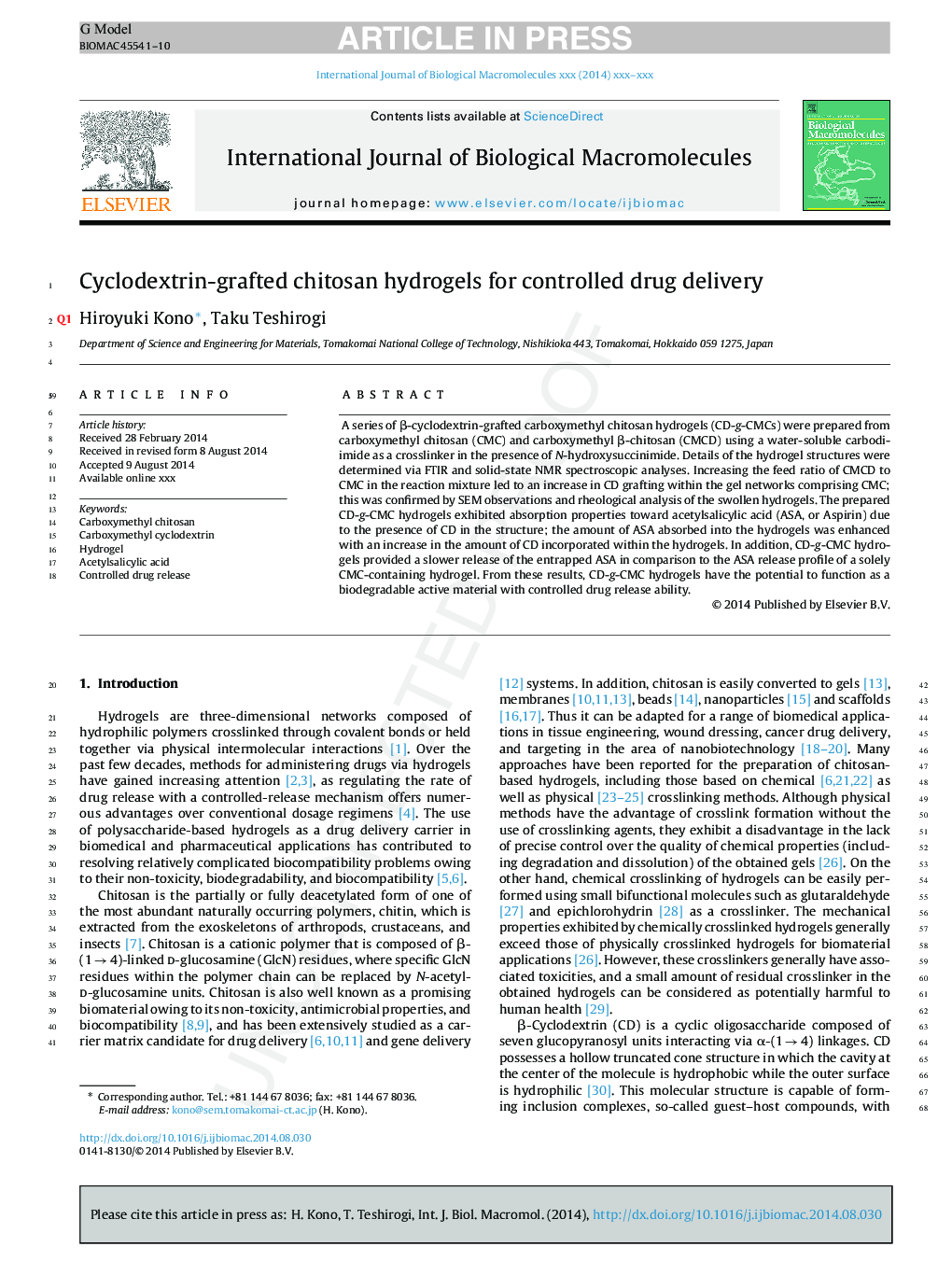| Article ID | Journal | Published Year | Pages | File Type |
|---|---|---|---|---|
| 8332395 | International Journal of Biological Macromolecules | 2015 | 10 Pages |
Abstract
A series of β-cyclodextrin-grafted carboxymethyl chitosan hydrogels (CD-g-CMCs) were prepared from carboxymethyl chitosan (CMC) and carboxymethyl β-chitosan (CMCD) using a water-soluble carbodiimide as a crosslinker in the presence of N-hydroxysuccinimide. Details of the hydrogel structures were determined via FTIR and solid-state NMR spectroscopic analyses. Increasing the feed ratio of CMCD to CMC in the reaction mixture led to an increase in CD grafting within the gel networks comprising CMC; this was confirmed by SEM observations and rheological analysis of the swollen hydrogels. The prepared CD-g-CMC hydrogels exhibited absorption properties toward acetylsalicylic acid (ASA, or Aspirin) due to the presence of CD in the structure; the amount of ASA absorbed into the hydrogels was enhanced with an increase in the amount of CD incorporated within the hydrogels. In addition, CD-g-CMC hydrogels provided a slower release of the entrapped ASA in comparison to the ASA release profile of a solely CMC-containing hydrogel. From these results, CD-g-CMC hydrogels have the potential to function as a biodegradable active material with controlled drug release ability.
Related Topics
Life Sciences
Biochemistry, Genetics and Molecular Biology
Biochemistry
Authors
Hiroyuki Kono, Taku Teshirogi,
